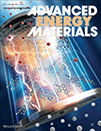
Ze Zhang, Ling-Long Kong, Sheng Liu, Guo-Ran Li,* andXue-Ping Gao*
Adv Energy Mater, 2017, 7, 1602543 [ pdf ]

Carbon materials have attracted extensive attention as the host materials of sulfur for lithium–sulfur battery, especially those with 3D architectural structure. Here, a novel 3D graphene nanosheet–carbon nanotube (GN–CNT) matrix is obtained through a simple one-pot pyrolysis process. The length and density of CNTs can be readily tuned by altering the additive amount of carbon source (urea). Specifically, CNTs are in situ introduced onto the surface of the graphene nanosheets (GN) and show a stable covalent interaction with GN. Besides, in the GN–CNT matrix, cobalt nanoparticles with different diameters exist as being wrapped in the top of CNTs or scattering on the GN surface, and abundant heteroatoms (N, O) are detected, both of which can help in immobilizing sulfur species. Such a rationally designed 3D GN–CNT matrix makes much more sense in enhancing the electrochemical performance of the sulfur cathode for rapid charge transfer and favorable electrolyte infiltration. Moreover, the presence of dispersed cobalt nanoparticles is beneficial for trapping lithium polysulfides by strong chemical interaction, and facilitating the mutual transformation between the high-order polysulfides and low-order ones. As a result, the S/GN–CNT composite presents a high sulfur utilization and large capacity on the basis of the S/GN–CNT composite as active material.
